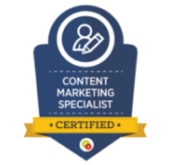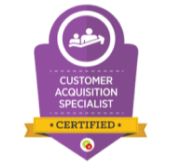If you sell a similar product or service to that of another company, what is it that makes yours stand out?
In other words, if the functionality is the same, why should anyone buy yours?
Explain your price value
Price is a big factor in education, for obvious reasons.
But we shouldn’t confuse price with value. Schools will often evaluate the true cost over time, not just the up front £.
Let’s say there are two products, which we will call, imaginatively, Product A and Product B.
Product A is priced at £100, and Product B is priced at £50.
These products are the same as each other in terms of what they do.
Product B is cheaper so seems the obvious choice.
However, the price of Product A includes a training session for the staff.
In my experience, it’s very hard to convince the people who hold the purse strings that Product B is likely to come with hidden costs, in the form of technical support and training.
A quick back-of-the-envelope calculation suggests that an hour of an IT technician’s time is around £27 (including on-costs).
Clearly, after two hours’-worth of training or technical support, Product B is more expensive than Product A in real terms.
So Product A is more cost-effective in the long run.
Building a pricing model
Consider how you structure the price of your product or service.
Pricing per user may appear attractive at first, especially if the price is low.
However, a price of, say, £1 per pupil per annum starts to look expensive once the size of the school and the cost of its other products or services are taken into account.
What other models do education companies use to price their products?
- By school type (e.g. whether a school is primary or secondary)
- In tranches, user bands e.g. 1-100 users, 101-200 users etc.
- Freemium by feature set e.g. free, for a limited feature set, and a one-off cost for the works.
A popular option is a basic price with various add-on services that the school can purchase as necessary.
These might be power user features, add on modules, PD, training, etc.
And let’s not forget – data. If you sell something that gathers data you can sell that back in various ways to the school.
This is usually more attractive to a school than a one-price-fits-all approach, but be careful: if there are too many options and variations it can be hard for the potential customer to figure out which one is best for their needs.
As an example of this take a look at the numerous subscription options and deals offered by newspapers and magazines. It can sometimes take an inordinate amount of time to work out, with the aid of a spreadsheet, which “deal” is the least expensive in the long run!
Service
If you’re unable to compete on price, which is often the case in a market where there are lots of similar products, perhaps you can compete on service instead.
For example, some companies will send you continual updates about where your product is, or what’s happening.
On one occasion, I had to take my Macbook laptop to a local shop for repair.
Cue a stream of text messages: “Your laptop has been sent to our workshop”; “Your laptop has been received by our workshop”; “Our engineers have now started testing your laptop, and so on.
In all, the repair took around a week, and I didn’t spend a moment wondering where the laptop was or what, if anything, was being done to repair it.
A variation of the service approach is to link it to price.
For example, the standard price enables a customer to obtain technical support by email, whereas the premium price gets them support via live chat (with a person rather than a bot).
Tech specs
One thing you could do is throw everything except the kitchen sink into the technical features of a product.
For some educational institutions, this will be just the ticket, especially if it is seen as a form of future-proofing, whereby more features can be implemented as the need arises.
A variation of this is to incorporate the idea into your pricing structure.
Most email companies do this sort of thing.
For a particular price you can email up to, say, 5000 users; for a bit more you can still email only 5,000 users, but you also benefit from features like segmentation or more detailed reports.
Community as a value-add
Sometimes the value of your product to the customer is about more than the price or the technical specifications.
I once recommended an interactive whiteboard that wasn’t as fully featured as a rival product but had a very active teachers’ forum where ideas and lesson materials could be exchanged.
That brings us back to the concept of hidden costs.
What teachers miss out on in terms of features in my product, they gain from access to free lesson ideas and resources that other teachers have created.
Thus, if you have a large and active user base that can be a great selling point in itself.
Make it easy to change to your product
To some extent, the education market is “sticky”: once a school buys into a product or service it’s a lot of hassle to change.
If this is the situation you’re facing, that is trying to break into an established market, consider making the transition easy.
For example, transfer of data from the established product to yours, or training centred on the similarities and differences in the way the established product and yours works.












